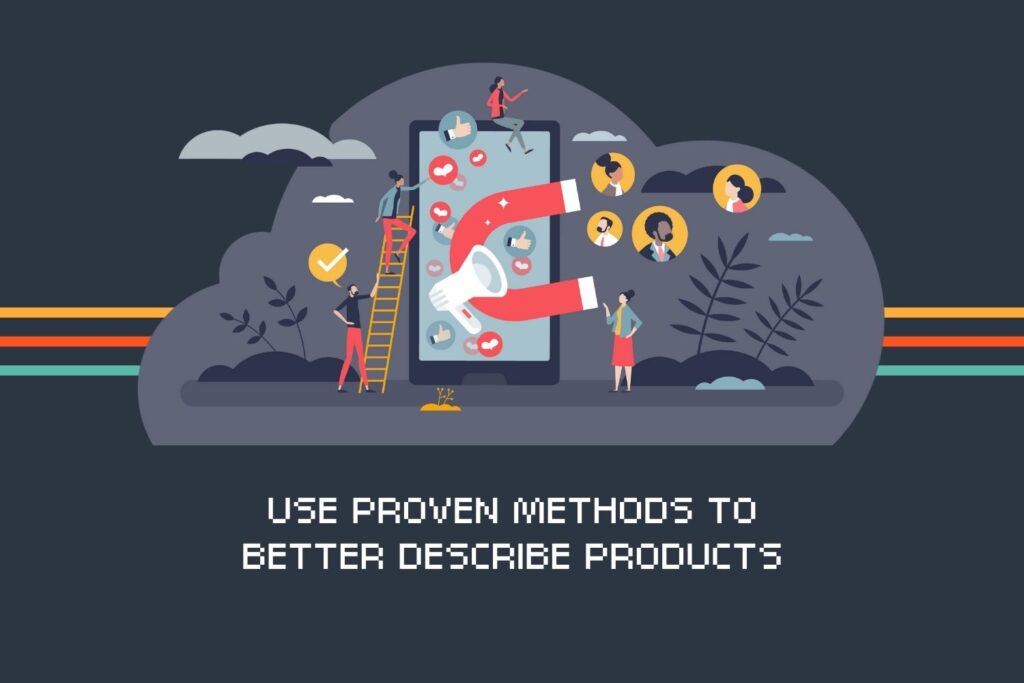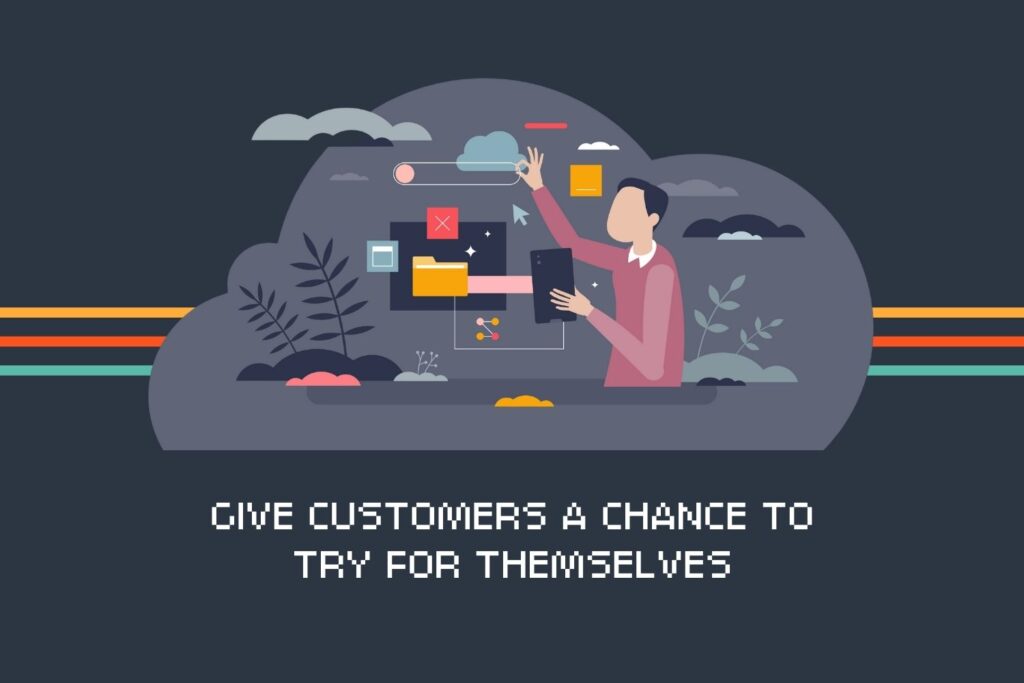The Best Methods To Educate Customers About Your Products
Consumer education isn’t always easy, especially for more complex products. Here’s a comprehensive list of proven methods that will help your business out.
The commercial world is bigger than ever. Because of that, the number of products people have to choose from is becoming too large for many to handle. This leads them to buy simple products or ones they already know. This can be a big hurdle for businesses with more complicated products.
While it’s important to simplify where possible, what you really need to do is educate your audience. Of course, this is easier said than done. Most consumers aren’t looking for a college-level lecture, so you must get creative with how you present your knowledge. In this post, we’ll walk you through some of the best methods for educating customers about your products. That way, you can get an upper hand in this ever-changing market.

Use Proven Methods To Better Describe Products
Fortunately, you’re not the first business with this problem. Many other companies have tried and found success with a handful of proven methods in the past. In this section, we’ll cover these tactics. You should try using at least one of them as the backbone of your entire customer education process.
Create a Running Blog
A blog is a fantastic way to share information and engage with your customers. There are many reasons why blogging is important for business, but in this case, it helps companies provide regular updates and explanations about their products. This will give you a great opportunity to showcase your expertise and delve into various aspects of your offerings.
By creating and maintaining a blog, you can share detailed information that may be difficult to communicate through traditional marketing channels. Plus, when you use of SEO, consumers looking for answers will be able to find your blogs more easily, leading to many new potential customers. Be sure to make your blog easy to navigate by categorizing articles by topic or product feature. Offer solutions to common concerns, answer frequently asked questions, and break down complex concepts with simple examples.
Put Together Informative Videos
If keeping up with a blog isn’t in your wheelhouse, try creating videos instead. In fact, many people prefer this method. Making informative videos about your product can be an extremely powerful tool for educating your customers.
You can create videos covering product demonstrations, tutorials, or even behind-the-scenes content showcasing the manufacturing process. This not only helps educate your customers but also builds an emotional connection, as they see the people and effort behind the product.
Start a Podcast
Podcasts are a medium that has become much more popular in recent years. By starting a podcast, you can create a channel that educates customers in an easy-to-consume format, ideal for those with busy lives. This format helps create an authentic conversation that not only informs listeners but also helps them feel connected to your brand, fostering loyalty. Plus, podcasts are great for bringing in other people who can speak about subjects surrounding your product. We’ll get more into that later.
Take to Social Media
Social media platforms are goldmines for engaging and educating your customers. With the massive reach and varied formats these platforms offer, you can tailor your content to suit the preferences of your target audience.
While most platforms focus on sharing bite-sized information, such as quick tips and interesting facts, you can use these posts to send viewers to other, more in-depth mediums. However, you can still use social media directly to run educational campaigns using infographics, short video stories, or long-form threads to provide valuable insights and advice.

Have Outside Sources Explain What You Do
The trouble that usually comes from putting your company’s resources out there is that not everyone is necessarily going to believe you. While detailed proof and compelling content are quite effective, some consumers might be skeptical. This is why it’s good to leverage outside sources to help spread knowledge on what your products can do. We’ll cover some of the best forms of this here.
Bring On an Industry Expert
One of the most effective ways to boost authority and credibility is to collaborate with an industry expert. These specialists have an established audience and possess great knowledge and expertise in their respective domains. By partnering with such experts, you not only receive valuable insights but also reach a wider audience who will perceive your product as a reliable and high-quality option.
You can bring them onto your podcast or videos, but an even better method is for them to educate their audience through their own channels. This will help spread awareness and make the expert seem more genuine.
Reach Out to Influencers
If industry experts aren’t an option, the next best thing is a social media influencer. In many cases, they can be just as knowledgeable. But even if they aren’t, you can teach them what to say. Plus, influencers can be powerful allies in spreading awareness about your products. With a built-in following, your message will reach a broader audience. Reach out to influencers in your industry and inquire about sponsored partnership opportunities.
For example, if your product revolves around healthy snack options, you can team up with a food influencer who can share delicious recipes featuring your products in their posts. Their prominent display of your brand will pique their followers’ interest. This will not only educate their followers but also increase your brand’s visibility.
Showcase Customer Reviews
Arguably, one of the most effective outside sources to rely on for promoting a product is the voice of satisfied customers. People are more likely to trust the opinion of someone they can relate to who has tried and tested the product with positive results.
Display customer reviews, testimonials, and case studies on your website and social media platforms. This authentic feedback not only educates potential consumers about your product but also instills confidence in their decision-making process.

Give Customers a Chance To Try for Themselves
In today’s fast-paced and digital world, personal interaction may seem like a relic from the past. However, many people understand things better when they can see and experience them for themselves. That means in-person strategies can often be the most effective when it comes to educating customers about your products. Here, we’ll explore some of the top tactics for educating customers about your products in person.
Go to In-Person Events
Attending trade shows, conferences, and local gatherings can provide a golden opportunity to showcase your products to a receptive audience. By setting up a booth or a table, you can engage potential customers directly. The one-on-one interaction allows for in-depth discussions, demonstrations, and even the possibility of immediate feedback.
Make sure your team is fully prepared to answer questions, provide expert advice, and educate attendees on the unique advantages of your offerings. Well-trained staff who are adept at sharing their enthusiasm for your products might be the secret ingredient for turning casual passersby into loyal customers.
Offer Free Trials and Samples
Everybody loves free stuff, and what better way to educate customers about your products than by letting them try them firsthand? Samples and trials give people a chance to see, feel, or even taste your product. This allows them to make a more informed decision before investing in a purchase.
However, while free samples certainly pique interest, it’s even more important to ensure you pack them up with valuable information. Make sure that customers understand how your product works, its benefits, and any potential downsides. Failing to do this can lead to more confusion and unhappy customers.
Make Return Policies Simple
If trials or samples aren’t a possibility for what you offer, try improving your return policy. One major hurdle that prevents many new customers from trying a product is the fear of ending up stuck with something they don’t understand. As a business, it’s important that you dispel that fear by making your return policies as simple and hassle-free as possible. At the same time, you want to ensure that your in-box instructions are clear.
Easy returns can make or break a potential customer’s decision to give your product a shot. To make it simple, allow customers to return products to a nearby store or through simple online return processes. This way, they feel reassured and are more likely to give your product a try, knowing that they have nothing to lose.
Sell Products in Brick-and-Mortar Stores
While e-commerce may be a game-changer, brick-and-mortar stores still have much to offer. For customers, being able to physically interact with a product often provides a level of education that online browsing simply can’t match.
Making your products available in physical stores creates an opportunity for customers to ask questions to store associates and evaluate your product on the spot. It’s no secret that holding a product, feeling its weight, and seeing its exact color can truly shift a customer’s perception and understanding.
